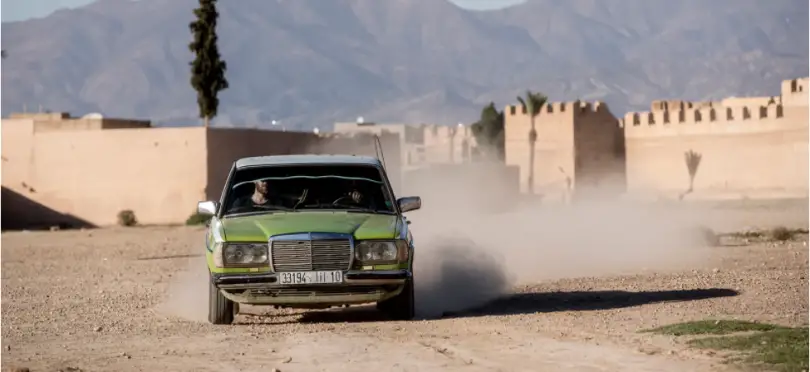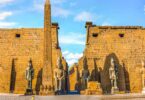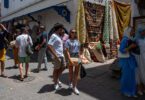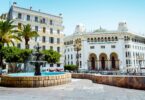Mercedes Benz Morocco is a strong love affair with Le Grand Taxis cultivating this special relationship among Moroccans.
People in Morocco don’t use Uber; they cram into Grand Taxis –usually old Mercedes Benz. They are the North African version of Cuba’s vintage automobiles, which are rusty yet colorful.
As to why an African country would have colourful but old diesel-powered Mercedes Benz is a long history. Nevertheless, it speaks to depth on why the love for Mercedes Benz Morocco is undying.

Mercedes Benz Morocco. Photo/BC Travel
Why Are Vintage Mercedes Benz Cars Used as Taxi in Morocco?
Mercedes Benz Morocco is thrilling. Grand Taxi drivers in this North African country were offered 80,000 diram (£6,500) in incentives to get rid of their old vehicles in 2014.
Over 56% of the 45,000 Grand Taxis in service are up to date as a result of this program. The government plans to boost this number to 100% by 2022 as a result.
Understanding the function of taxis in Morocco is critical to the success of this program on a national basis. There are only 2.8 million registered automobiles in a population of 36 million people. In short, there is only one car for every 11 Moroccans.
It’s worth noting that the population of neighbouring Spain, which has about 10 million more people, has almost 24 million vehicles. The vintage Mercedes Grand Taxis are the most popular long-distance mode of transportation.
This is because no train or bus offers a well-developed or inexpensive option for the general public.
Taxi driver Hassan Mesfar describes Le Grand Taxi as a pillar to Morocco’s economy. They provide reliability because public transport is nearly non-existent. And the train – its schedule and frequency is inconveniencing.
Le Grand Taxi in Essaouria
The bubbly city is a perfect embodiment of the Mercedes Benz Morocco attachment. Every city in Morocco has a Place des Grand Taxis, which is more than just a taxi queue. It’s a major transportation centre.
The operations of a company are overseen by a chief broker, who sits in a prominent position and is surrounded by aides. Outside of the walls of his complex in Essaouira, he can be found yelling orders at drivers, his assistants and even the passengers.
Travellers headed to a northern city are led into one cab, while those headed south are led into another, and so on. As soon as there are no more empty seats, the vehicle begins its voyage.
Even though many drivers travel more than 1,000 kilometres per day, they like to return to their home base each night.
Thus, the farther the destination, the earlier the departure. However, this is not always possible but it does not kill the Mercedes Benz Morocco love.
Almost everything in Essaouria has this unusual shade of blue. From horse-drawn carriages to people’s front doors – even the Petit Taxis. For shorter trips within the city limits, Petit Taxis, which are smaller cars (often French hatchbacks) with a maximum capacity of two passengers, must be painted a different colour in most other Moroccan cities.

Mercedes Benz Morocco. Photo/BC Travel
Mercedes Benz Morocco Dates Back to Sultan Hassan Days
The German automaker and the North African kingdom are inseparable. And this is since the dawn of the motor era. The first Mercedes-Benz was purchased by Moroccan Sultan Hassan I in 1892, and this royal support has lasted ever since. The present King of Morocco, Mohammed VI, still drives a Mercedes Benz 600 that was passed down from his father.
Like the stars painted on their bonnets, Mercedes automobiles are associated with the rich and famous. But in Mercedes Benz Morocco story is a bit different. Though rusty, these diesel engines are the business machinery sustaining many families in Morocco.
For many taxi operators, Mercedes Benz remains a favourite over newer American models. But the downside is pollution due to the emission of toxic fumes by these old diesel engines.








